The world of aviation is extraordinarily complex, even more than we can instinctively imagine. Every operation must be calculated precisely, there are procedures to study for every possible event, practices to keep in mind, even beyond the “simple” driving of the plane. For this reason the training process it must be looked after carefully and therefore becomes a cost. Which, however, technology can help contain, facilitating operations. That's what he's doing Wizz Airwhich became the first airline to implement virtual reality technologies in its pilot training. We went to Budapest to better understand how revolutionary this is.
Wizz Air implements virtual reality pilot training
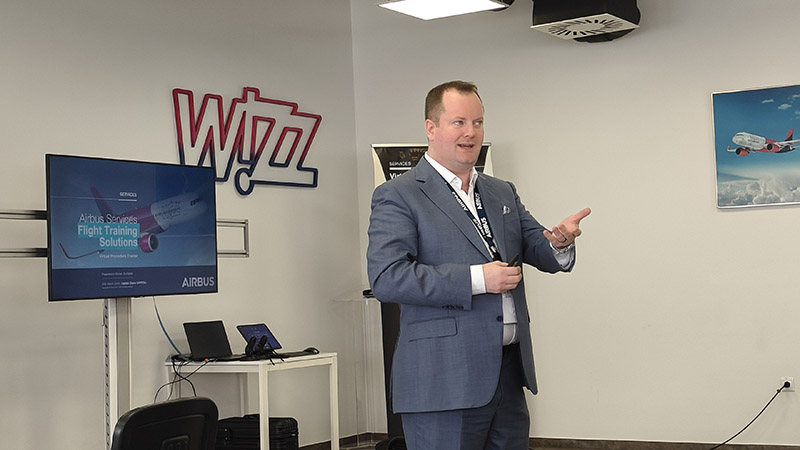

This airline celebrates its year this year twentieth anniversary and it is a great entrepreneurial success story. Driving it ULCC model (Ultra Low-Cost Carrier) to which they have remained faithful from the beginning, with the aim of keeping the company's spending and consequently that of the consumer to a minimum. And it was an idea he had evidently it worked.
In fact, today it is the fastest growing airline in Europe. According to estimates, Wizz Air should add as many as 300 new aircraft to its fleet between now and 2030 and this would involve the training of approximately 4,000 new pilots and employees. A giant process, to be managed in the most efficient way possible. Exactly, with the technology support.
Wizz Air will in fact be the first airline to use the suite Mobile Airbus Training experience (MATe) and technology Virtual Procedure Trainer (VPT) for the training of its pilots. Tools that combined together can make these processes extraordinarily more efficient, allowing not only to contain costs, but also to obtain better results in training.
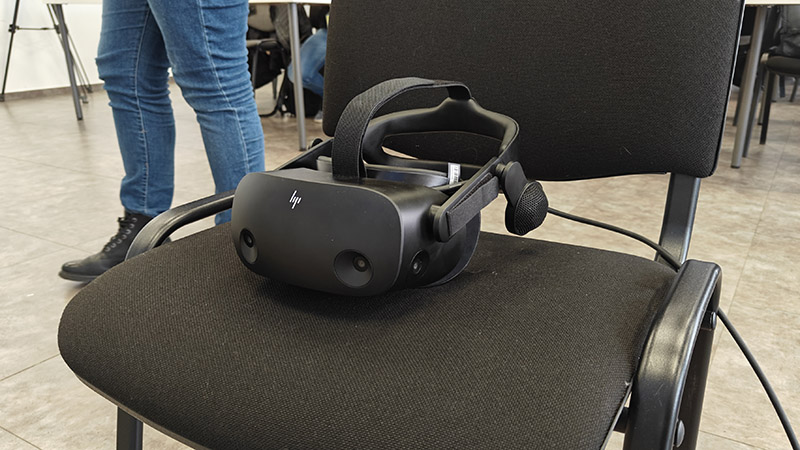

This technology is already active in the training sessions of the company's center in Budapest, where we went to discover it. The plans also include a new space dedicated to training coming soon, right in our area. It is in fact expected within the year the inauguration of a new center in Romeat Fiumicino airport.
How does Wizz Air pilot training in virtual reality work?
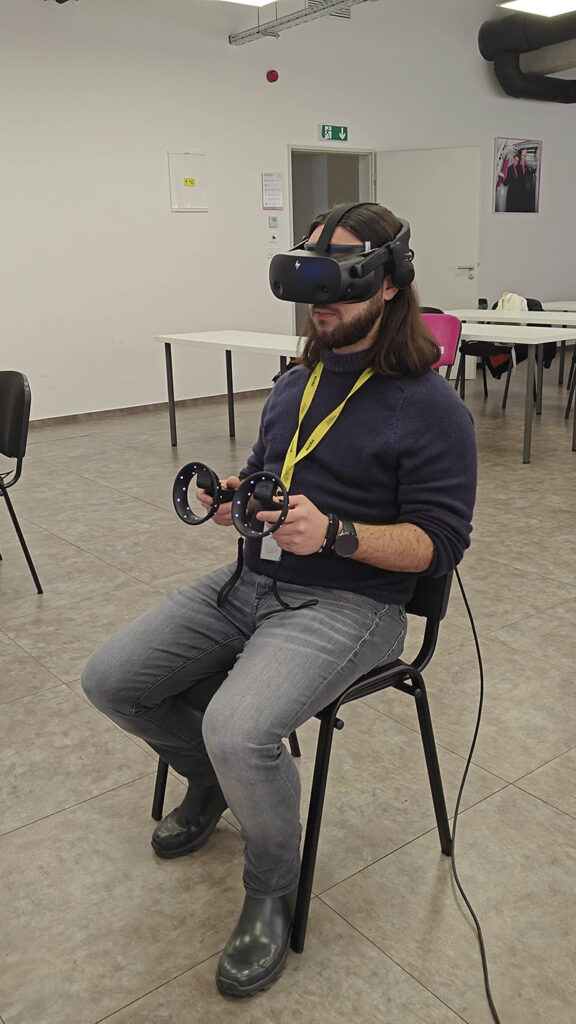
 “So, clutch, I put it in first gear, handbrake, accelerator… Oh no, it doesn't work like that?”
“So, clutch, I put it in first gear, handbrake, accelerator… Oh no, it doesn't work like that?”
If reading this far you have imagined something similar to Microsoft Flight Simulator, you came close, but not that close. The Mobile Airbus Training experience suite is in fact designed to offer an experience more focused on understanding the controls of the different Airbus models and the related procedures to follow on board.
It's a platform cloud based which transports the user aboard a cockpit, placing him in front of the full bridge. Here it can practice the proceduressuch as starting the aircraft, going through all the individual steps, whether they are levers and buttons to activate or simply controls to be carried out on the screen.
The simulation is rebuilt in an exceptional way, the impression is really that of finding yourself in a cockpit (and indeed we were slightly alienated by the “return to reality” once the visor was removed). And indeed, the playback quality it is even held back by hardware possibilities, so one day it could become even more faithful.
This is a fundamental aspect, because the meaning of this platform is precisely allow Wizz Air pilots to familiarize themselves with the bridge during training. It is a tool that helps you learn procedures more automatically and immersivefavoring different types of memorization.
For this there are some solutions to make even more concrete the experience. Levers, buttons, switches are activated with gestures that replicate real ones, it is not just a generic click of the controller. And they also return a feedback via vibrationsgiving a more precise idea of what would happen in real life.
This clearly cannot replace the simulator
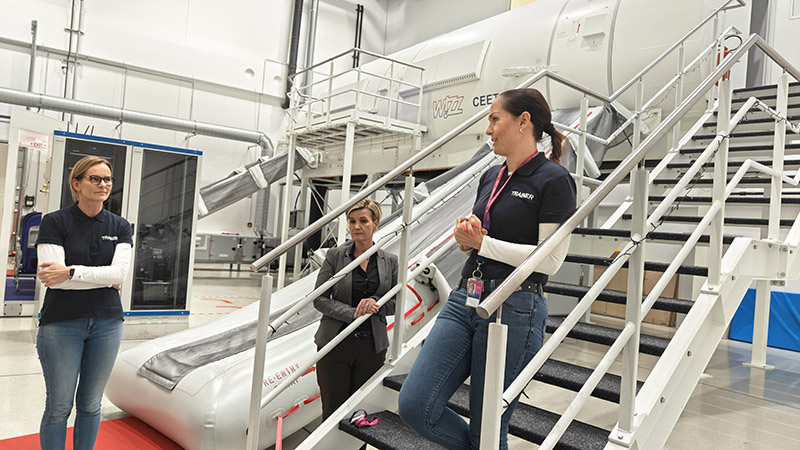

During our visit to the Wizz Air pilot training center in Budapest, we could explore the entire structure and what it offers. There are in fact various structures available to “students” who can explore different scenarios to always be prepared in case of need in the future.
Particularly surprising, at least for us, was the area dedicated to cabin crew. These are real parts of decommissioned aircraft, which are used as a simulation environment to study and practice the different procedures, whether it be the explanation of safety measures, the use of life jackets or the reproduction of an emergency landing. Well yes, we also tried to go down the inflatable slide.
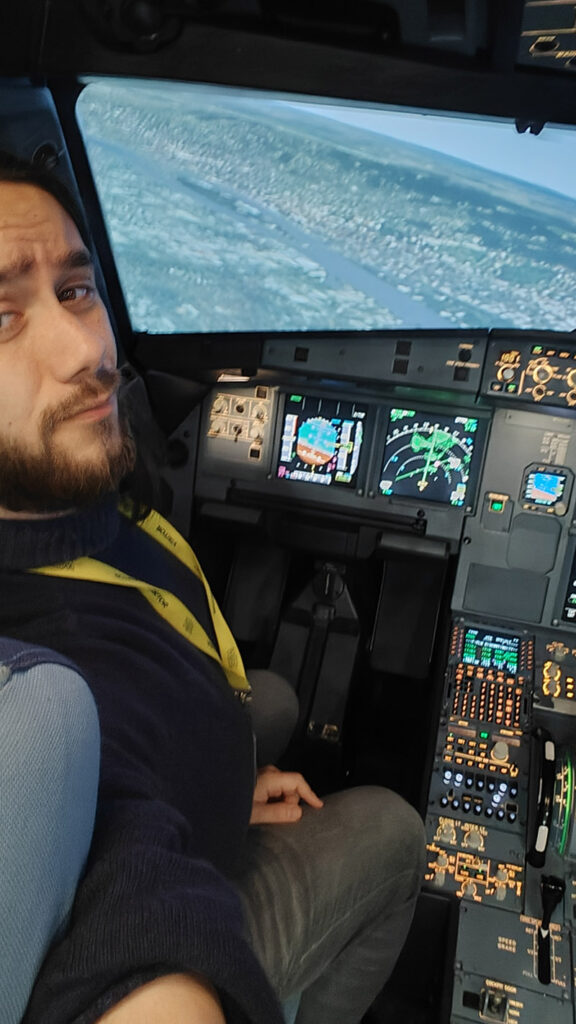
 From up here the (simulated) view is beautiful
From up here the (simulated) view is beautiful
Of course then there is lots of space dedicated to the pilots, with different simulators where you can gain experience. They range from the three full motion ones, i.e. which also replicate the movement of the aircraft, with inclinations and vibrations, to the stable one, which still provides an experience decidedly immersive. It will be here that Wizz Air pilots will do the most important parts of their training, before taking to the skies.
However, these are definitely structures important both from the point of view of size and cost. Consequently, the time that each future pilot has available is necessarily limited and therefore limited optimized. The addition of VR allows you to lighten the load.
The MATe suite is in fact designed for run on hardware accessible to anyone. It can even be accessed from the iPad (in a non-VR version). In this way you can do exercises for some practices without needing to be physically at the simulator. So more pilots can be trained and make the most of the equipment available.
Wizz Air pilot training will therefore be more complete and rich
Attila TóváriHead of ATO at Wizz Air, commented on the presentation of the new equipment as follows:
“We are very pleased and grateful to have partnered with Airbus to create and obtain CAA approval for our new VR training program. This cutting-edge technology will not only revolutionize the way we train our staff, but the entire industry.
We care about our flight crews and believe in investing in the best technology to achieve the highest and safest training standards on the market. Our crews are often the face of the airline to our passengers and we believe these new tools will allow them to perform at the highest level.”
Charbel YouzkatliHead of Commercial Services Europe at Airbus, added:
“We are delighted to have Wizz Air as the first customer that will use both of Airbus' VR-driven digital training solutions, the MATe Suite and VPT. These solutions will actively contribute to Wizz Air's digital journey in pilot training.
The MATe Suite and VPT training solutions offer pilots an immersive experience and more flexible and efficient training. This configuration also allows us to optimize the entire Type Rating course while maintaining the highest Airbus training standards.”
For more information on Wizz Air and the services it offers, we refer you to the company's official website.







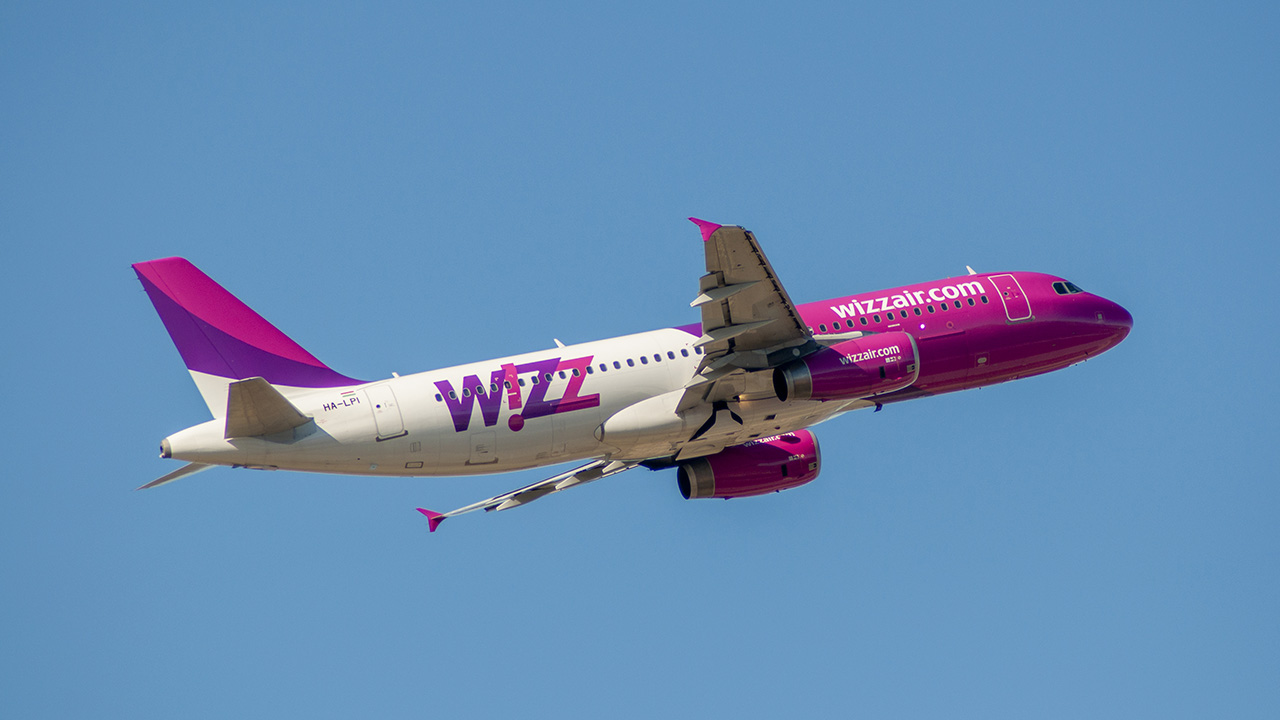







Leave a Reply
View Comments